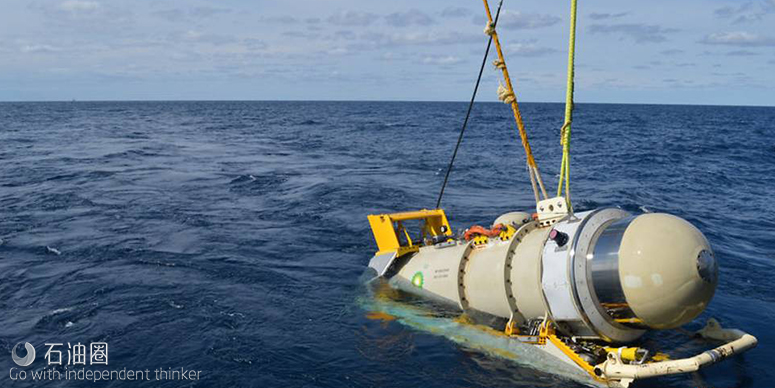BP is reaping the rewards of its focus on advanced seismic imaging, announcing four significant additions to its oil resources in the Gulf of Mexico, which can be developed using nearby platforms.
The discoveries, which are at various stages of development, will help BP expand production in the Gulf of Mexico to 400,000 b/d, up from 300,000 b/d currently.
BP has approved subsea development of 400 million bbl of oil in place near its Atlantis platform. The $1.3 billion project, Atlantis Phase 3, will tie back eight new wells to the platform located 150 miles south of New Orleans. BP plans to bring the project on line in 2020 with peak production of 38,000 b/d, and future developments are expected.
Another 1 billion bbl of oil in place “has been identified” near BP’s Thunder Horse field. Both projects used a method known as full waveform inversion, using algorithms developed by the company to speed processing of the huge datasets used for seismic imaging from a year to a few weeks, BP said.
Two other discoveries were made near platforms in the Gulf of Mexico, which will also allow tiebacks, significantly reducing the time and cost required to put them into production.
A discovery in the Manuel prospect in Mississippi Canyon can be tied back to BP’s Na Kika platform. The reservoir is described as a “high-quality Miocene sandstone.” BP’s partner on the project is Shell.
Another find was made on the Nearly Headless Nick prospect, which has a similar Miocene pay. Production there would likely be via a tieback to the Delta House platform owned by LLOG, which is a partner on the project with BP, along with Kosmos Energy and Ridgewood Energy.
Tieback opportunities are often required to produce many finds because only a fraction of the oil in place will actually be produced. Adding wells to an older platform avoids the huge cost of a new platform and allows an older facility to continue operating near capacity as the original wells age. Seismic advances will help it maximize production from its acreage.
“These fields are still young—only 12% of the hydrocarbons in place across our Gulf portfolio have been produced so far. We can see many opportunities for further development, offering the potential to continue to create significant value through the middle of the next decade and beyond,” said Bernard Looney, BP Upstream chief executive.
Seismic Advances
Seismic has long been one of a handful of key research targets for BP. It plans to deploy new systems using a totally new sound source capable of generating ultra-low-frequency sounds, with nodes on the seafloor to record the data.
The Wolfspar seismic sound source uses a piston to create sounds concentrated at frequencies below what can be created using air guns. BP developed the new device because those ultra-low- frequency sounds provide the data required to accurately image reservoirs beneath the thick layers of salt in the Gulf of Mexico, which air guns cannot, according to a description in a recent SPE presentation by a BP expert.
The air guns commonly used do not produce enough signals at those frequencies to solve the problems caused by salt.
While other major oil companies are working to develop similar sound sources, BP said it has been using the Wolfspar sound source in the field.
“Following a successful field trial at the Mad Dog field, further advanced seismic imaging with ocean bottom nodes, and BP’s proprietary Wolfspar seismic acquisition source, is being planned for Thunder Horse and Atlantis to better understand the reservoirs,” BP said in its announcement.
Beginning in 2007 and continuing into 2015 BP designed, built, and field tested Wolfspar®, a full-scale ultra-low-frequency seismic source optimized for full-waveform inversion. Like airguns or marine vibrators, at low frequencies the Wolfspar source declines in amplitude at about 18 dB / octave. However, Wolfspar differs from airguns in that it can tailor its output precisely to the needs of our preferred algorithm for velocity model building, full-waveform inversion (i.e., it is “FWI friendly”). The source also precisely records its radiated wavefield and this information can be used in the modeling step of the inversion algorithm. Although producing much less power than a large airgun array, this new source is more efficient with the energy it produces. Field-testing the source under tow at 4 knots, recording into ocean-bottom sensors, we achieved an excellent signal-to-noise ratio in the deep water Gulf of Mexico at offsets of over 30 km and at frequencies as low as 1.6 Hz despite the significant ambient noise at these frequencies. We expect that lower frequencies will be possible while under tow, but this has not yet been tested.
It is well known that “the lower the frequency, the easier the problem becomes”. Modeling indicates that with current algorithms, if we could record signals down to ~1.4 Hz at 30 km offsets, many existing model-building challenges should become algorithmically tractable. Unfortunately, the difficulty of making a seismic signal at a given acoustic power level scales with inverse frequency cubed. Thus, 1 Hz is not 10, but 1000 times more difficult to make than 10 Hz. Worse, the Earth itself rapidly becomes noisier below a few Hz. Combining these two effects, we find that as we attempt to obtain data below about 4 Hz, our signal-to-noise rapidly decreases. For the most part, the industry has put their efforts into an algorithmic solution to the problem, on the assumption that producing and operating a device capable of making usable signal-to-noise below 2 Hz would just be too difficult.

 石油圈
石油圈
